How to Build an Investment Portfolio
How should someone build their investment portfolio in a 401k or 403b retirement savings account? How does this differ from how a portfolio is invested once a person enters retirement? The Wiser team discusses the differences in today’s podcast.
Listen on Apple Podcasts or watch on YouTube:
You can also find this episode on your favorite podcast listening app, like, Google Podcasts, TuneIn Radio, Stitcher, and Spotify.
SUMMARY
Constructing a portfolio can be challenging. The notable risk factor paired with market uncertainty can be enough to scare one away from the thought of investing. In this podcast, our team discusses the common concerns around the idea of investing, along with advice on how to build a portfolio suited to your personal objectives. As a whole, your portfolio should take into account the investors age, risk tolerance and desired objective. As a rule of thumb, younger investors typically invest more in equity (stocks), which tend to have a higher rate of return than bonds. On the other hand, older investors are often more conservative, investing heavily in bonds, which have a higher predictability factor, meaning less risk.
The first step in building a portfolio is to set a target date fund. This future date should reflect the investor’s desired or expected year of retirement. As a whole, target date funds include four types of funds: international stock, U.S. stock, international bond and equity funds. Traditionally, these target date funds are tilted heavily towards international equities, by about 50%. Step two would bring us to the investor’s 401k, giving them the ability to allocate between stocks and bonds. Historically, 401k plan’s provide anywhere between 12-20 investment options. Because there are not many fixed income or bond options in a 401K plan, stocks play the starring role. In an aggressive investment portfolio, one could allocate upwards of 90% into stocks.
Asset classes are an important distinguishing factor when differentiating equity exposure. There are 4 notable classes: large cap, mid cap, small cap and international & emerging markets. These classes are determined by this equation: number of outstanding shares x market price = capitalization. An example of a large cap would be the Dow Jones or S&P 500. Each class will come with their own level of risk and return. It is also important to discuss the difference between active funds and index funds. An active fund is managed by a fund manager who is making the portfolio decisions, including the action of buying and trading. Index funds are when an investor buys a group of stocks at a lower cost. Oftentimes, you can differentiate between a mutual fund and index fund because the stock name will indicate the asset class and index it follows.
When discussing the idea of maxing out a 401k plan, this likely calls for elimination of debt and living below your means, but once it is time to actually retire, many are left wondering if they should continue using their 401k in place? In most cases, the answer is no. To easily define it, a 401k is meant to get you to retirement, not get you through retirement. After you retire, it is recommended to utilize a financial planner to execute a proper retirement portfolio based on new goals and objectives. In other words, the purpose of the portfolio is shifting from accumulation to payout.
Some may be surprised to learn that improper asset allocation is not the primary reason for the derailment of an investment portfolio. In actuality, the number one reason for the derailment of an investment portfolio is behavior. It is human nature for fear and greed to be motivators for decision making. With that being said, utilizing a financial planner can remove the fear and greed factors from the equation, and allow for successful execution of a positive portfolio.
Share This Story, Choose Your Platform!
Wiser Wealth Management, Inc (“Wiser Wealth”) is a registered investment adviser with the U.S. Securities and Exchange Commission (SEC). As a registered investment adviser, Wiser Wealth and its employees are subject to various rules, filings, and requirements. You can visit the SEC’s website here to obtain further information on our firm or investment adviser’s registration.
Wiser Wealth’s website provides general information regarding our business along with access to additional investment related information, various financial calculators, and external / third party links. Material presented on this website is believed to be from reliable sources and is meant for informational purposes only. Wiser Wealth does not endorse or accept responsibility for the content of any third-party website and is not affiliated with any third-party website or social media page. Wiser Wealth does not expressly or implicitly adopt or endorse any of the expressions, opinions or content posted by third party websites or on social media pages. While Wiser Wealth uses reasonable efforts to obtain information from sources it believes to be reliable, we make no representation that the information or opinions contained in our publications are accurate, reliable, or complete.
To the extent that you utilize any financial calculators or links in our website, you acknowledge and understand that the information provided to you should not be construed as personal investment advice from Wiser Wealth or any of its investment professionals. Advice provided by Wiser Wealth is given only within the context of our contractual agreement with the client. Wiser Wealth does not offer legal, accounting or tax advice. Consult your own attorney, accountant, and other professionals for these services.





